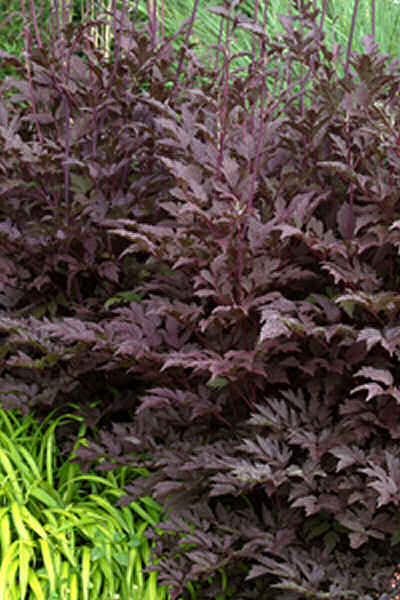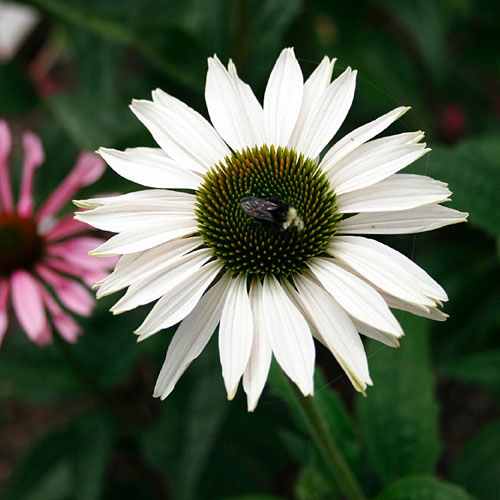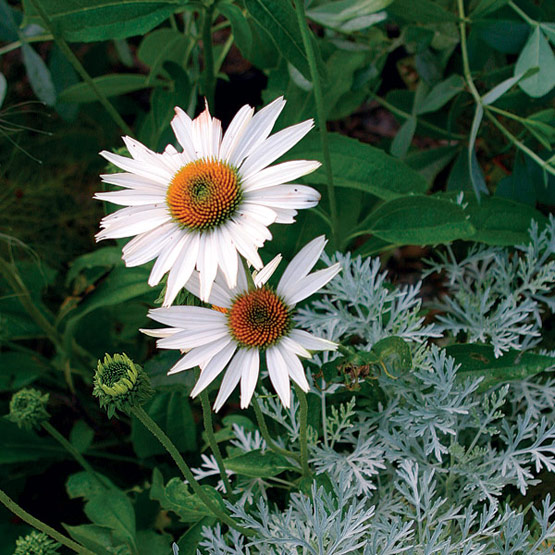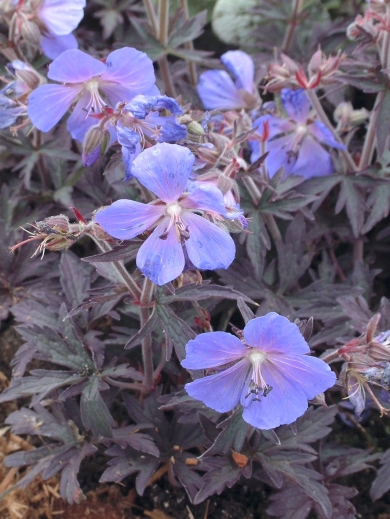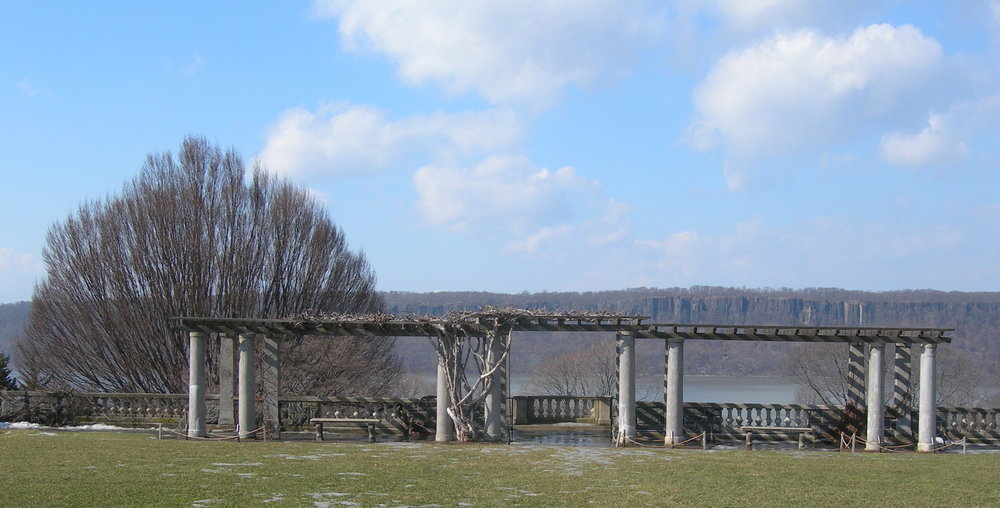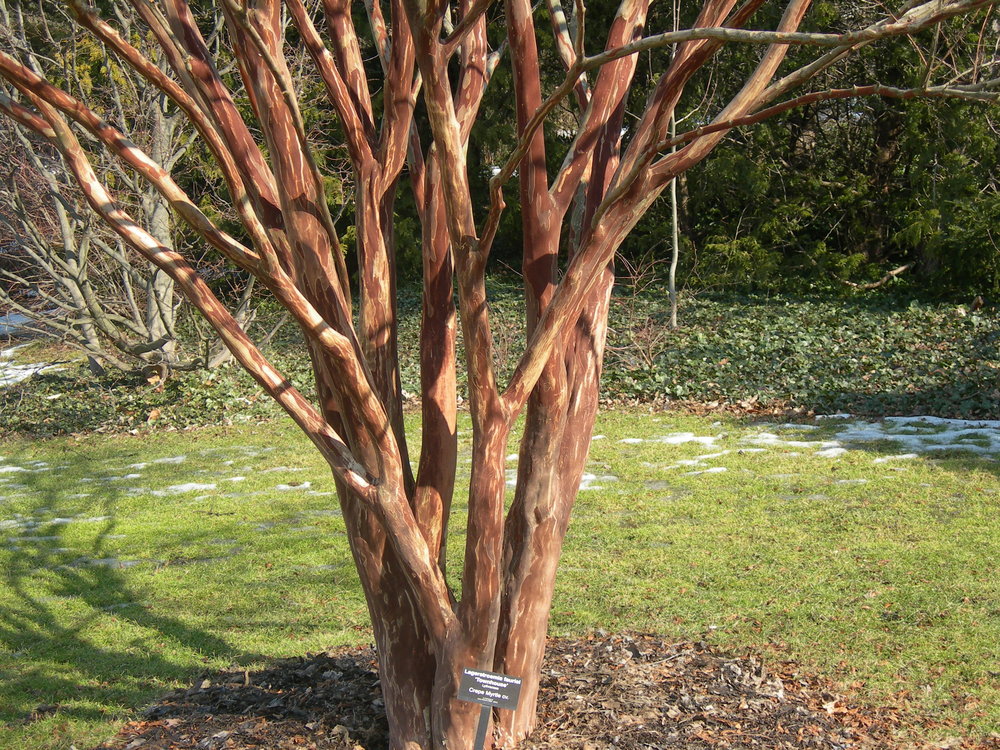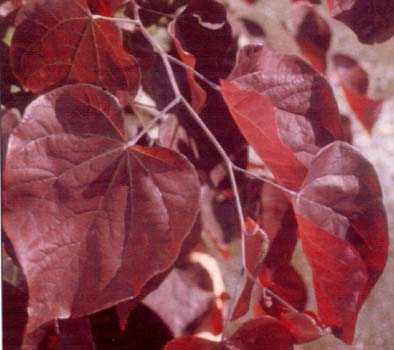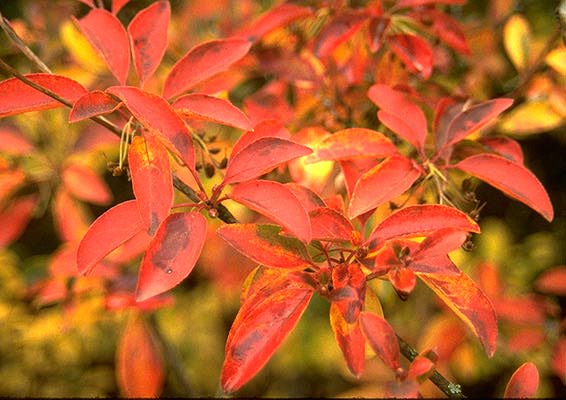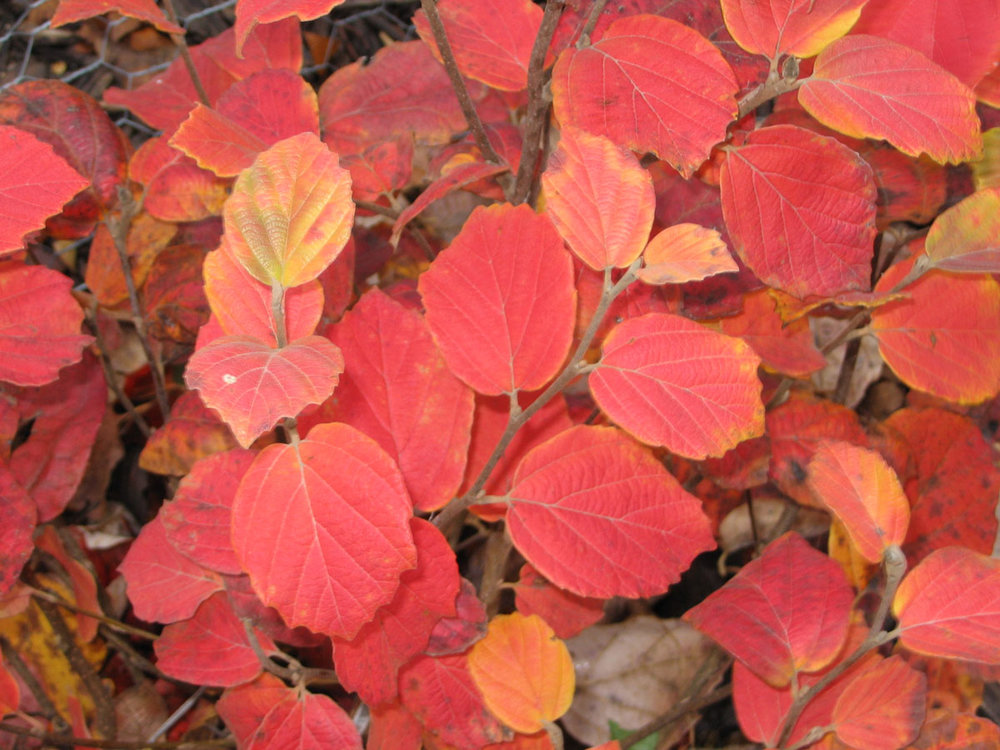Ninebark 'Diabolo'
Colored stems, like those of red twig or yellow twig dogwood, are an excellent way to add winter interest to a landscape.
So here's what I've found out Leaves and stems contain pigments – molecules that absorb specific wavelengths of light. Chlorophyll gives leaves their green color because it absorbs all wavelengths except green. Carotenoids produce yellow and orange colors – plants that are orange or yellow (corn, carrots, daffodils, bananas) are rich in these pigments. Anthocyanins absorb blue, blue-green, and green light, so that reflected light appears red. Anthocyanins give color to cranberries, red apples, concord grapes, blueberries and tree and shrub varieties with purple leaves. Unlike chlorophyll and carotene, anthocyanins are not attached to cell membranes, but are dissolved in the cell sap. Because anthocyanins are in sap, stems and twigs can be red as well.
During summer, high levels of chlorophyll production cause leaves to appear green, largely by masking other pigments. Water and nutrients flow from the roots, through the branches, and into the leaves. The sugars produced by photosynthesis flow from the leaves to other parts of the tree, where some of the chemical energy is used for growth and some is stored. The shortening days and cool nights of fall triggers a cascade of changes in trees, including decreased chlorophyll production (so that other pigments are unmasked and the leaves turn from green to yellow, orange or red) and increased amount of sugar in the sap (because the tree is not growing anymore). In some trees, as the concentration of sugar in the sap increases, the sugar reacts to form anthocyanins. These pigments cause leaves, twigs and stems to turn red. (Also an indicator of when anthocyanin-containing fruit is ripe – high sugar content in the cells).
The range and intensity of fall color is greatly influenced by the weather. Low temperatures destroy chlorophyll, and, if they stay above freezing, promote the formation of anthocyanins. Bright sunshine also destroys chlorophyll and enhances anthocyanin production. Dry weather, by increasing sugar concentration in sap, also increases the amount of anthocyanin. So the brightest fall colors are produced when dry, sunny days are followed by cool, dry nights.
Some botanists also think that anthocyanin production is protective – by producing this pigment the plant is protecting itself from potential damage from UV rays that can be very intense in the winter.
As the tree starts to grow again in spring, the stored nutrients start to be used up, the sap starts to flow and the tree starts to produce leaves. The anthocyanins break down so that the bright color of the stems fades.
Because the genetic make-up of the individual tree or shrub determines the balance of pigments and the factors that influence their production, different cultivars can be selected based on the intensity of the red/purple color of their leaves and stems and its sensitivity to length of days and weather conditions. That’s undoubtedly why some purple-leaved cultivars look mainly green at the height of summer and others look purple all the time, as well as why the purple color is less intense in some cultivars if they’re not getting enough sun – not enough sugar in the sap to support anthocyanin production in that particular cultivar. Also why new cultivars of red twig dogwood can be selected for brighter red stems.

